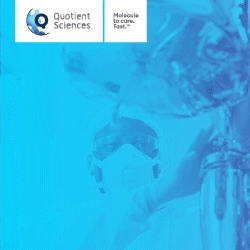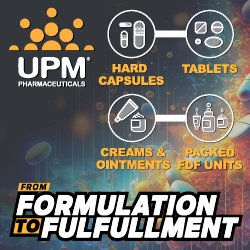Terumo Announces Commercial Launch of the Immucise Intradermal Injection System
Terumo Corporation (TSE: 4543) recently announced the commercial launch of its Immucise™ Intradermal Injection System, which is designed to deliver vaccines and other approved drugs to the dermal layer of the skin, with the potential for vaccines to improve immunogenicity in comparison to subcutaneous and intramuscular injection.1,2

Immucise™ Intradermal Injection System
The Immucise Intradermal Injection System is a vertical puncture type intradermal (ID) injection device that is applied perpendicular to the surface of the skin, in the deltoid region. The needle, which has an outside diameter of 0.2 mm (33 G) and is 1.15 mm long, is designed to be retained in the dermal layer during delivery.2 The system, which is already CE marked, is indicated in the US for intradermal injection of FDA approved drugs for infants aged 2 months (excluding low birth weight and/or preterm birth) to adults.
The dermis is extremely rich in various resident and recruited types of dendritic cells, which play a critical role in the human immune response by capturing antigens and presenting them to T cells, and ID administration of vaccines can potentially result in quantitatively or qualitatively superior immune responses compared to intramuscular (IM) or subcutaneous (SC) injection.1 The World Health Organization (WHO) promotes the use of ID administration for certain vaccines (eg, rabies), and recognizes it as an equally safe and efficacious alternative to IM vaccination.3
Furthermore, intradermal tissue is rich in lymphatic capillaries and has unique characteristics,4 which allow for preferential uptake of 10-100 nanometer particles into lymphatics,5 leading to efficient accumulation in lymph nodes compared to subcutaneous injections. This enhanced lymphatic transfer improves vaccine efficiency and enables antibody delivery to lymph nodes, potentially boosting anti-PD-L1 antibody efficacy and suppressing tumor growth.6
“Intradermal vaccination using the Immucise Intradermal Injection System offers many advantages to vaccine developers, including that it reduces the volume of vaccine used by sixty to eighty percent compared with intramuscular injection, is less costly, and has potential to mitigate vaccine shortages,”3 said Noritsugu Fujita, Division President, Terumo Pharmaceutical Solutions.
“To assess use of the device by healthcare professionals,” continues Sakiko Shimizu, Senior Principal Scientist, Terumo Corporation. “ID injection using the Immucise Intradermal Injection System was evaluated through a human factor study, which showed no observed usage errors. Effectiveness was also demonstrated with higher success rate of wheal, or bump, formation at the delivery site, and without any of the potential leakage associated with the Mantoux technique, the traditional method of intradermal injection.”2, 7-10
For more information about the Immucise™ Intradermal Injection System, visit: Terumo pharmaceutical solutions- Immucise
References
- Intradermal delivery of vaccines: A review of the literature and the potential for development for use in low- and middle-income countries [Internet]. Available from https://www.path.org/our-impact/resources/intradermal-delivery-of-vaccines-a-review-of-the-literature-and-the-potential-for-development-for-use-in-low-and-middle-income-countries/.
- Shimizu, R. Tanaka, E. Itoh et al. Vaccine 40 (2022) 873-879.
- Specifically, of modern cell culture rabies vaccines (with a potency of >2.5IU per intramuscular dose) for post-exposure prophylaxis (PEP) (https://www.who.int/teams/control-of-neglected-tropical-diseases/rabies/pep-recommendations).
- 4 Lala PK, Nandi P. Cancer Metastasis Rev. 2018 Sep;37(2-3):369-385.
- Bagby TR, Cai S, Duan S, Thati S, Aires DJ, Forrest L. Pharmaceutics. 2012 May 23;4(2):276-95.
- Ryo Tanaka, et. al., Cancer Treatment and Research Communications, Volume 36, 2023, 100740.
- Terumo Corporation internal report.
- R Arakane et al. Vaccine 33 46 (2015):6340-6350.
- Tarnow Karen, et al. Applied Nursing Research 17.4 (2004).
- Tsals, Izrail. Vaccine vol. 35,14 (2017): 1797-1801.
Total Page Views: 1223















